A castle or a prison? Stone ruins line Vine Street in Kansas City. KCQ answers why
“What’s your KC Q” is a joint project of the Kansas City Public Library and The Kansas City Star. Readers submit questions, the public votes on which questions to answer, and our team of librarians and reporters dig deep to uncover the answers.
Have a question you want to ask? Submit it now »
Randy Mason
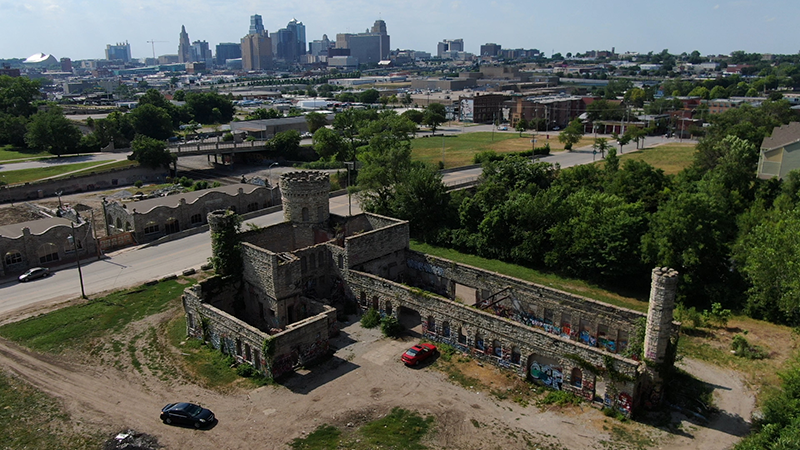
This time “What’s Your KCQ?,” a community partnership between the Kansas City Public Library and The Star, heads for one of the city’s best known “unknown” places.
Reader Catherine Bedora wrote KCQ to inquire about “the old stone buildings just east of Paseo near 21st Street, including one that looks like a small castle. Who built them and what were they used for?”
Of the three eye-catching structures strung along Vine from 20th to 21st Street, by far the most dramatic is the one that came to be known as the Kansas City Workhouse Castle. It opened in 1897, replacing the old Kansas City Workhouse or municipal jail across the street.
Designed by architects A. Wallace Love and James Oliver Hogg, the building’s Romanesque Revival style gave it a grandeur seldom found in penal institutions. But as Major Alf Brandt, the Workhouse superintendent, explained at the time to The Star, “If it doesn’t cost any more (to do it) why not?”
Of course, it was inmate labor that held those costs well below market rate. All the limestone for the workhouse was quarried on site by prisoners. Though most were serving time for petty offenses, the walls that contained them were 3 feet thick and the basement boasted a steel-lined dungeon.
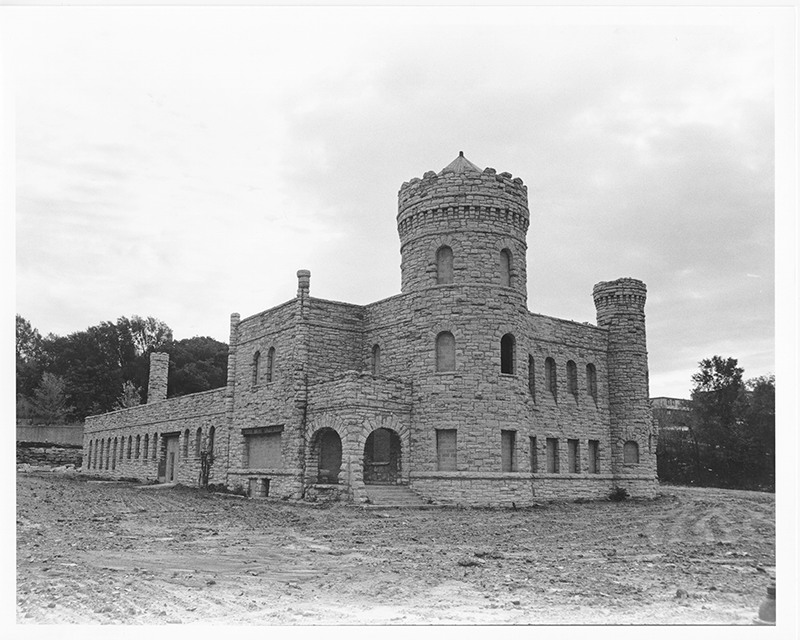
It wasn’t long before the postcard-friendly prison on the outside drew fire for the deplorable conditions developing on the inside. By 1909, Mayor Thomas Crittenden Jr. decided there was need for a better facility. Work began quickly on the new Kansas City Municipal Farm in the Leeds District located on the the east edge of town.
Accounts about the transition vary, but by 1924 at the latest, all cells at the Workhouse Castle had been emptied of occupants. Over the next few decades, the city used it for offices and equipment storage, and reportedly at one point for Marine training exercises, before abandoning it entirely in 1972.
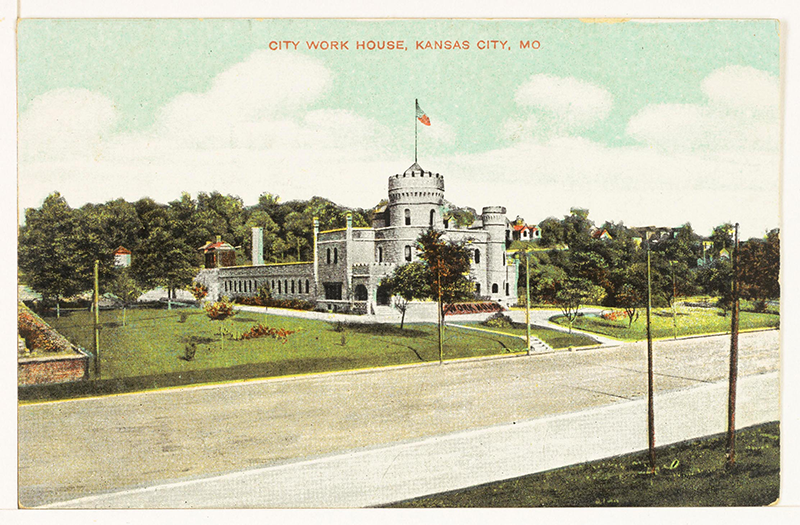
In 2007 the graffiti-strewn ruins were placed on the Kansas City Register of Historic Places. A few years later, Daniel and Ebony Edwards made headlines with their grassroots quest to reinvent the castle as a one-of-a-kind community center. They removed tons of trash and debris, and even held their wedding there, but ultimately failed to find the funding such an endeavor would require.
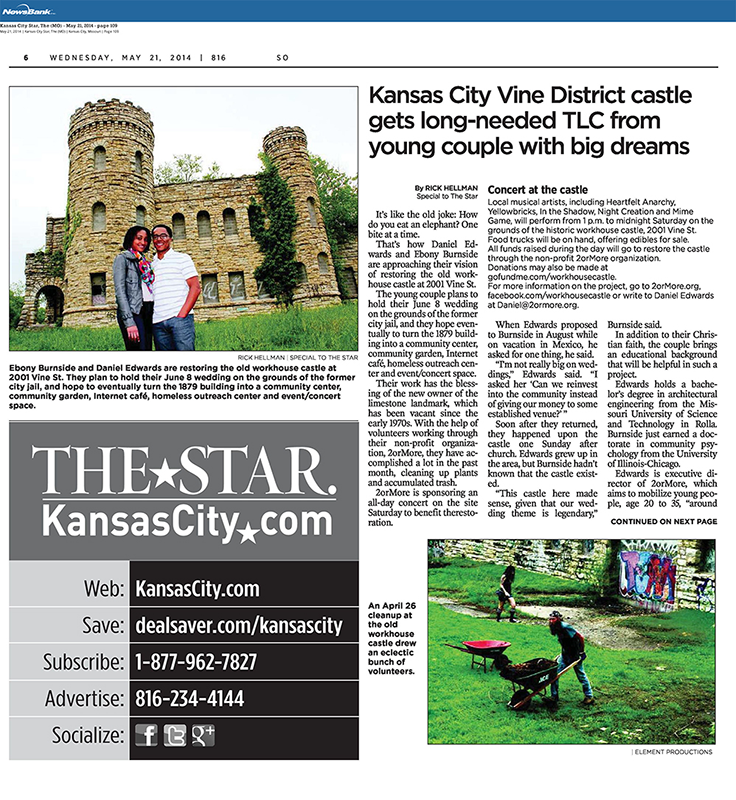
Currently, the structure and grounds are included in a proposed $22 million housing development that calls for rebuilding and utilizing the Workhouse Castle as an administrative center for the project.
Now, about those similar looking stone works nearby. Could they be somehow related?
No, in fact, the long, low shells lining the west side of Vine date back to 1866 — 30 years before the castle was a gleam in Brandt’s eye. These were the city’s first public works buildings, with “water” and “streets” still clearly inscribed above the arched entrances.
They have recently been renovated to accommodate a variety of uses — everything from office space to an Airbnb or possibly some kind of performance venue.
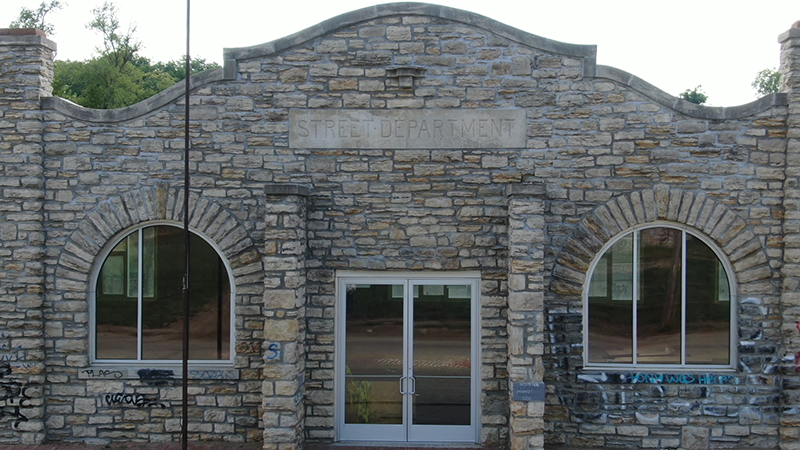
Which leaves us with the new kid on the block, relatively speaking.
Firehouse #11, at the corner of 21st and Vine, didn’t arrive until 1931. It was built by the WPA to house the city’s first Black fire company. After the firefighters moved to a new location on Troost, the Black Archives of Mid-America occupied the building for several decades. These days the old firehouse is home to a small art gallery run by Pat Jordan, along with several other community enterprises.
The trucks and the fire pole may be long gone, but the windows facing north offer impeccable views of the Kansas City Workhouse Castle — or what remains of it at age 123. And a front row seat to the parade of people who constantly drop by to grab a photo op of their own.
Historical references in this article were provided by the library’s Missouri Valley Special Collections.
Submit a Question
Do you want to ask a question for a future voting round? Kansas City Star reporters and Kansas City Public Library researchers will investigate the question and explain how we got the answer. Enter it below to get started.


